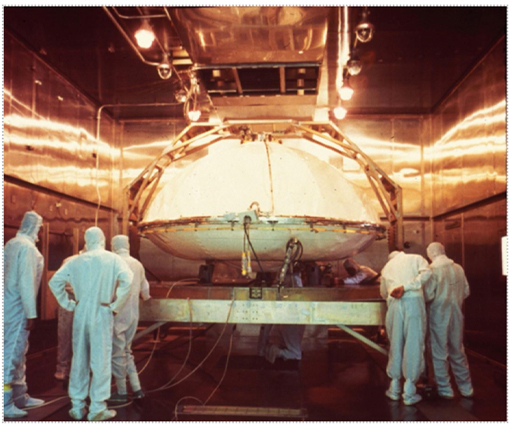4.1.1 Planetary protection and Mars exploration
Early missions to Mars were a huge learning curve for planetary protection (then called ‘planetary quarantine’). The twin Viking landers that reached Mars in 1976 had stringent planetary protection requirements applied to prevent the microbial contamination of the martian surface to a probability of less than 1 × 10−3. This meant the Viking landers were required to carry with them no more than 300 terrestrial bacterial spores per m2.
-
Why might spores be included in planetary protection requirements?
-
Spores are highly resistant to environmental extremes.
Spores are used as a proxy for all microbes, to represent bioburden. Bioburden includes all the microorganisms living on a surface. To demonstrate the challenges associated with this, consider that it is estimated that there are up to 10000 microbes on 1 cm2 of human skin.
Monitoring bioburden is therefore one of the key requirements needed during spacecraft build. For example, for the Viking missions (Figure 24), the landers were cleaned and then dry heat sterilised for 30 hours at temperatures above 120 °C to remove viable organisms (viable mean those that are alive and can perform essential biological functions). This was especially critical on Viking because the landers carried four biology experiments specifically designed to look for life within the martian regolith (soil).
Our understanding of Mars has evolved considerably since the first Viking mission, and so the next section will look at planetary protection requirements for current Mars missions.

